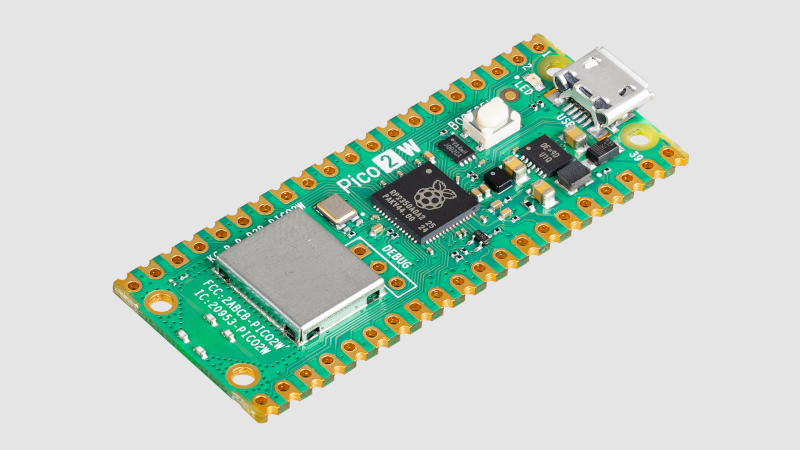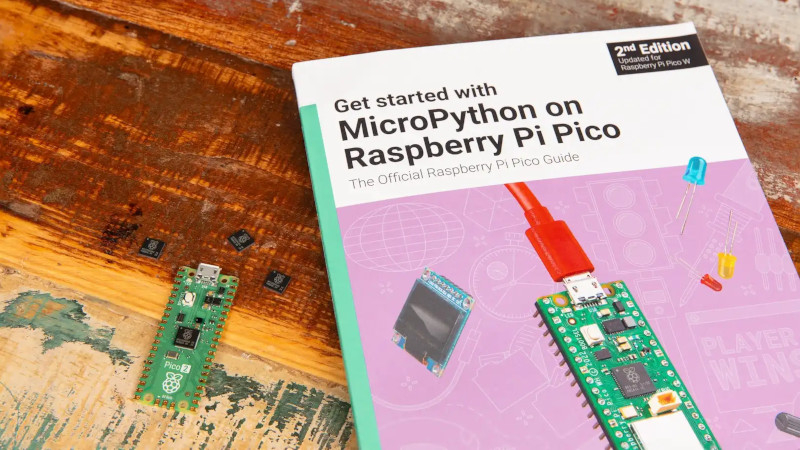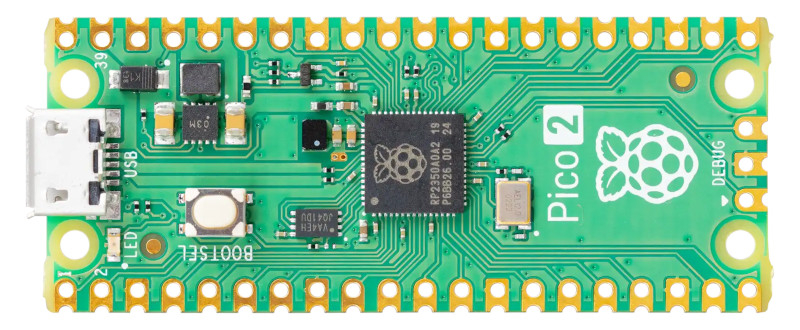Raspberry Pi has introduced the Pico 2 W board, which differs from Pico 2 in supporting Wi-Fi (2.4 GHz, 802.11n) and Bluetooth 5.2 wireless interfaces. The new product, costing only $7, is equipped with a microcontroller with a frequency of 150 MHz, which has cores with Arm and RISC-V architectures, and also includes 4 MB of flash memory. Compatibility with previous models makes the new product a universal tool for IoT projects and automation systems.

Image source: Raspberry Pi
The Raspberry Pi Pico 2 W is a compact microcontroller board designed to control peripheral devices and components. It is based on the RP2350 microcontroller, which has already been used in previous Raspberry Pi products and has high-quality documentation that simplifies development. The ability to execute code directly, without an operating system (OS), ensures low latency and high power efficiency, making the board ideal for embedded systems and IoT devices.
Pico 2 W is equipped with multiple GPIO pins located on the edges of the board, which serve as an interface for connecting sensors, actuators and other peripheral components. These contacts provide convenient interaction between the peripheral and the microcontroller. Developers often use breadboards for testing, avoiding soldering in the early stages, before moving on to integration into final devices. This flexibility makes the Pico 2 W an ideal choice for both prototyping and creating complete solutions.

Pico 2 W supports programming in C, C++ and MicroPython, the latter specifically adapted for microcontrollers. MicroPython allows you to create compact and easy to read code, making it ideal for beginning developers. Full compatibility with previous generations of boards simplifies the transfer of existing projects and significantly speeds up the process of developing new solutions.
The processor of the Pico 2 W board combines two pairs of cores based on the Arm Cortex-M33 and Hazard 3 RISC-V architectures, operating at a frequency of 150 MHz. The Cortex-M33 core has gained popularity in the microcontroller industry due to its stability and widespread support, while RISC-V stands out for its open architecture, flexibility and customization. Users can programmatically choose between these architectures, allowing the device to be tailored to specific tasks, providing versatility.

Pico 2 W is equipped with 4 MB of flash memory and 520 KB of SRAM built into the RP2350 microcontroller. This amount of memory ensures the execution of most tasks related to peripheral management and process automation. However, the device is not designed for complex computing, which underscores its focus on energy efficiency and optimal interaction with connected components.
Pico 2 W supports 2.4 GHz Wi-Fi (802.11n) and Bluetooth 5.2, making it an excellent choice for IoT device development. While the lack of 5GHz Wi-Fi may limit its use in some scenarios, the board remains a versatile solution for most tasks. For projects that don’t require wireless functionality, Raspberry Pi offers a version of Pico 2 without Wi-Fi and Bluetooth modules that costs just $5.

Raspberry Pi microcontrollers are increasingly used in industry, as evidenced by the fact that in 2023, 72% of the company’s sales came from embedded and industrial solutions. Pico 2 W is available individually or in reels of 480 boards, reducing costs for mass production. This delivery format makes the board especially attractive for large projects and mass production.